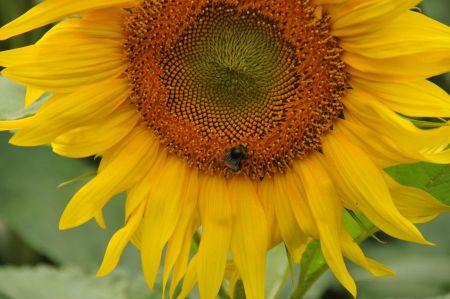The health-promoting spoonful of honey in the morning
- Written by Portal Editor
In our article about the trip to Barßel, we already talked about the great breakfast at Mariechen and Jochen's, which had one special feature: the obligatory spoonful of honey before the actual breakfast, which is only intended to keep the body healthy.
A process that the two of them regularly observe, even in the evening. Jochen, in particular, attaches great importance to knowing which beekeeper the honey comes from and what the overall quality of the honey is. The two are usually not satisfied with the pure department store quality and have chosen their "court supplier" over the years.
What makes honey so unique and healthy?
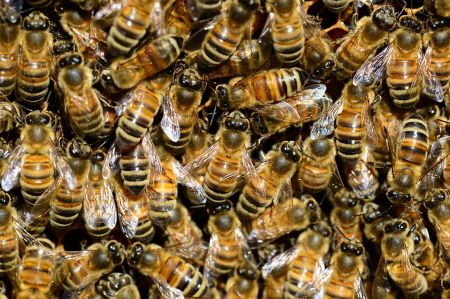 There are now other buyers in the region around Jever, so Jochen regularly drives to his honey supplier in Ibbenbühren. Jochen even swears by other applications, which he has mostly tested on himself while studying, for example in the treatment of injuries or skin problems.
There are now other buyers in the region around Jever, so Jochen regularly drives to his honey supplier in Ibbenbühren. Jochen even swears by other applications, which he has mostly tested on himself while studying, for example in the treatment of injuries or skin problems.
More than 200 ingredients determine the quality of the honey, which, however, can vary greatly in composition depending on the variety. And this is exactly where the choice of honey supplier is crucial. For humans, it is primarily the 27 to 44% fraction of fructose and the 22 to 41% fraction of glucose that are important in daily consumption. However, it is precisely the variety of other ingredients, such as other types of sugar, pollen, minerals, proteins, enzymes, amino acids, vitamins, coloring and flavorings, that make honey so particularly valuable.
Cave paintings of the Cuevas de la Araña near Valencia
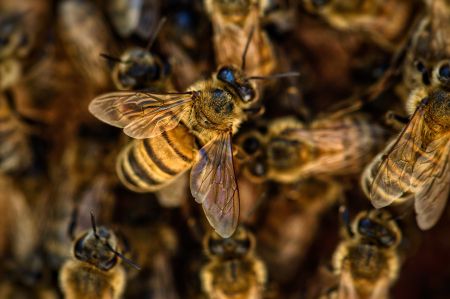 Honey has been collected by humans since ancient times as a dietary supplement. Scientists know from old cave paintings in the Cuevas de la Araña near Valencia in Spain, which are around 8,000 years old, that there were even people who specialized in collecting honey from wild bee colonies. Stone Age people considered honey to be the only sweetener known to date, but it was also used as bait for bear hunting. Science today assumes the origin of domestic beekeeping with honey production planned by humans in Anatolia around 7,000 BC. In ancient Egypt around 3,000 BC, people used honey as the "food of the gods" and source of immortality. Even the small amount of honey in a small vessel was worth a donkey. Honey was also found as a burial object in the tombs of the pharaohs of ancient Egypt.
Honey has been collected by humans since ancient times as a dietary supplement. Scientists know from old cave paintings in the Cuevas de la Araña near Valencia in Spain, which are around 8,000 years old, that there were even people who specialized in collecting honey from wild bee colonies. Stone Age people considered honey to be the only sweetener known to date, but it was also used as bait for bear hunting. Science today assumes the origin of domestic beekeeping with honey production planned by humans in Anatolia around 7,000 BC. In ancient Egypt around 3,000 BC, people used honey as the "food of the gods" and source of immortality. Even the small amount of honey in a small vessel was worth a donkey. Honey was also found as a burial object in the tombs of the pharaohs of ancient Egypt.
Honey for antipyretic treatment
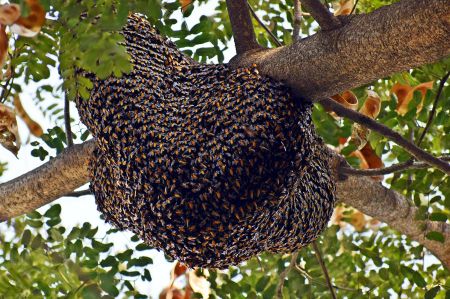 The philosopher and medical scholar Hippocrates used and taught honey to treat fevers in the sick around 400 BC and improved the athletic performance of athletes by adding honey to the water. The Koran reports very comprehensively on the healing properties of honey and describes in the 16th sura, verse 68 - 69 that "the bee was given the command by inspiration to eat of all fruits and thereby produce honey so that the honey is ready for humans has a healing effect.”
The philosopher and medical scholar Hippocrates used and taught honey to treat fevers in the sick around 400 BC and improved the athletic performance of athletes by adding honey to the water. The Koran reports very comprehensively on the healing properties of honey and describes in the 16th sura, verse 68 - 69 that "the bee was given the command by inspiration to eat of all fruits and thereby produce honey so that the honey is ready for humans has a healing effect.”
The main source of honey for bees is the nectar of flowering plants. With the help of their suction proboscis, bees can absorb the plant nectar or honeydew, enrich it with endogenous substances and thus change it in the body, then transport it to the beehive and store it in the honeycomb and let it mature.
Sign for the beekeeper that the honey is now ready to be harvested
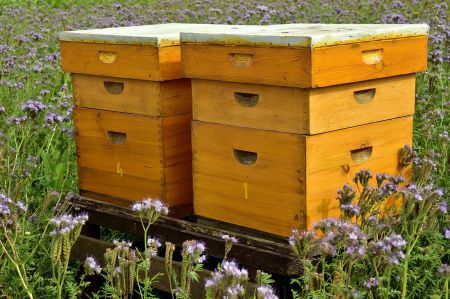 This addition of the bee's own additives and the reduction of the water content during transport to the beehive is ultimately one of the wonders of nature, research into which has not yet been fully completed.
This addition of the bee's own additives and the reduction of the water content during transport to the beehive is ultimately one of the wonders of nature, research into which has not yet been fully completed.
Today, the enzymes added by the bee are known to the extent that the changes in the sugar spectrum and the formation of inhibins, which inhibit the growth of yeast and bacteria, have been recognized.
The water reduction alone in the bees' proboscis, which sucks in and lets out the nectar several times, thereby reducing the water content to 30 - 40%, is still a broad area of research.
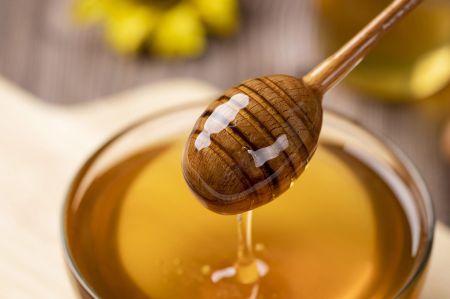 Now the already thickened fruit nectar is brought into empty honeycomb cells, which are only partially filled.
Now the already thickened fruit nectar is brought into empty honeycomb cells, which are only partially filled.
This is done for the purpose of creating the largest possible surface area so that as much additional water as possible can evaporate quickly.
The bees even accelerate this process of evaporation by constantly fanning fresh air with their wings. In this way, the bees manage to reduce the water content to below 20%. Now the almost finished honey is moved to the storage cells above the brood nest and covered with an airtight layer of wax.
This is the sign for the beekeeper that the honey is now ready to be harvested.
Extraction of sugar from sugar beet greatly displaces honey
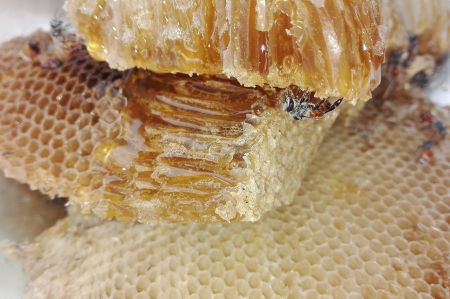 Since the nectar is also used for self-feeding in the beehive, honey is only produced when a sufficient amount of nectar is brought into the beehive by the forager bees per unit of time. If the amount brought in is less than the amount needed to feed the bee colony and raise the offspring, no honey will be formed. This means that people can harvest the honey without hesitation. The honey obtained can be solid, almost crystalline or even liquid, which mainly depends on the sugar content.
Since the nectar is also used for self-feeding in the beehive, honey is only produced when a sufficient amount of nectar is brought into the beehive by the forager bees per unit of time. If the amount brought in is less than the amount needed to feed the bee colony and raise the offspring, no honey will be formed. This means that people can harvest the honey without hesitation. The honey obtained can be solid, almost crystalline or even liquid, which mainly depends on the sugar content.
Exotic types of bees are known in Australia, Asia and America, which provide other high-quality honeys, which are still largely unknown in Europe and are therefore still considered specialties. In total, about 1,300,000 tons of honey are produced annually worldwide, with Asia being the main producer. Unfortunately, the industrial production of sugar from sugar beet has greatly displaced honey, and only today has honey returned to our food list as a healthy food.
A spoonful of honey every morning at the start of breakfast
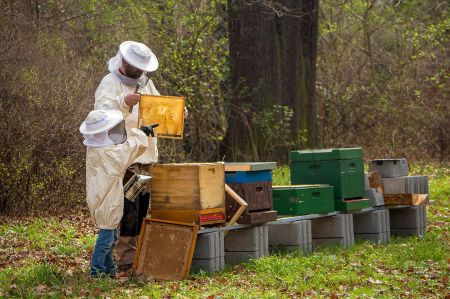 Follow Jochen's example and use the ingredients of honey for a healthy additional source of energy with just a spoonful of honey in the morning and in the evening. Ask your local beekeeper for their comments and knowledge about honey and you will be amazed at the wide range of uses for this purely natural product. Brita and Gerda, who were also breakfast guests, are now using this knowledge back at home in Albertshofen: a spoonful of honey every morning at the beginning of breakfast.
Follow Jochen's example and use the ingredients of honey for a healthy additional source of energy with just a spoonful of honey in the morning and in the evening. Ask your local beekeeper for their comments and knowledge about honey and you will be amazed at the wide range of uses for this purely natural product. Brita and Gerda, who were also breakfast guests, are now using this knowledge back at home in Albertshofen: a spoonful of honey every morning at the beginning of breakfast.
Please also read:
